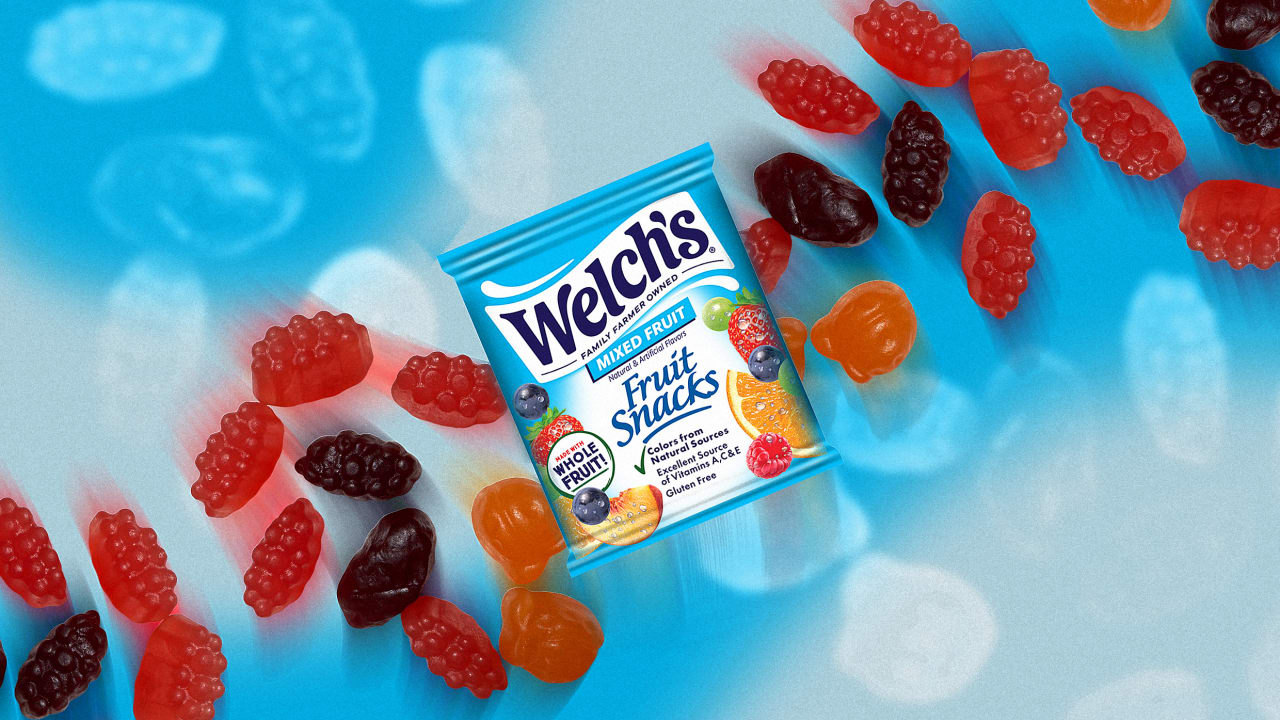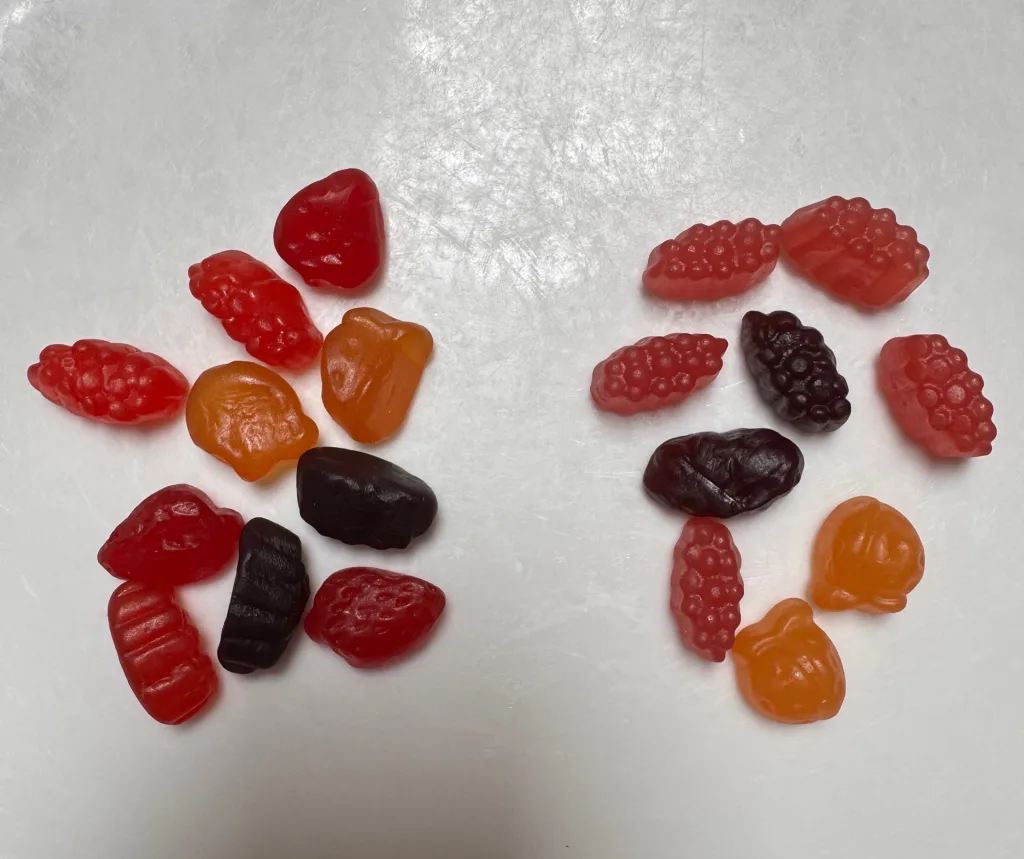How hard is it to remove artificial dye from food? It took Welch’s Fruit Snacks 10 years

American food is about to look a little bit duller, but that’s probably for the best.
Since Robert F. Kennedy Jr. introduced a ban targeting eight synthetic dyes in processed food, Kraft Heinz and General Mills have both committed to removing them across all their product lines by the end of 2027 in what will be the most significant ingredient shift in the processed food industry since the ban of trans fats in 2018.
But PIM Brands—makers of Welch’s Fruit Snacks, the top seller in its category worldwide—posits that this transition may be harder than it looks, at least if companies want to protect the bright color experience of their products.
“It would be darn impossible, in my opinion, to just snap your fingers and say, ‘Okay, we’re gonna make everything better in the next year or two,” says Michael Rosenberg, president & CEO of PIM Brands. “I think Americans are just a little bit more aggressive and punchy and just want to visually enjoy their products.”
It’s a challenge of both consumer expectations around product consistency, but also, in terms of human perception: Bright colors can actually make things taste sweeter or skew our tastebuds in other ways.
Today, the company is announcing that it’s removed all artificial dyes from its “mixed fruit” Welch’s Fruit Snacks, with the remainder of its portfolio transitioning next year. But the road to get here was anything but quick or easy for the company—despite having its own food science team in-house.
Instead, it’s been a 10-year process, the company says, adding that it couldn’t have possibly reacted rapidly to the demands of the new administration.
“It happens that all this coalesced just as the MAGA movement was really intensifying, but that’s just pure coincidence,” says Rosenberg. “Because we started working on this before any of this ever was even on anybody’s radar screen.”

The challenge of natural dyes
The big truth about dyes is that they make up very little of the food we eat—maybe 0.5% of a Welch’s Fruit Snack is added color by volume, according to Bhavna Ramani, chief R&D and production officer of PIM Brands. But their use has still prompted legitimate health concerns from researchers. The synthetic dyes used in the U.S. aren’t actually banned in Europe, but since 2010 manufacturers have had to place a warning label on foods in the region using them. Manufacturers have tried to avoid using these warnings, so their versions of products like Fruit Loops often eliminate artificial dyes and appear duller as a result.
The Welch’s team tracked these concerns a decade ago, and began a plan to transition its product. Its challenges ranged from feasibility (how do you source a color as rare as blue?) to its own scale—the company’s own color suppliers couldn’t meet their demand.
As of today, a simple Welch’s Fruit Snack is a portrait of our complex global industrial supply chain. The majority of its ingredients are a real fruit puree that match the flavor they’re advertising. That means for a strawberry snack, the company uses strawberries rather than defaulting to cheaper ingredients like apples and pears and supplementing flavor with extracts. But these fruits generally don’t supply the amount of color to which artificial dyes have accustomed us: peach, for instance, would be but the faintest shade of orange without dye.
Welch’s approach means that it already sources 30 different fruits from countries around the globe, tracking seasonal produce worldwide so that it can constantly produce all of its flavors of fruit snack. “When it’s hot in one place, it’s cold in another,” says Rosenberg. “So we’re really traversing the globe for our raw materials.”
Shifting to natural dyes meant shifting from a synthetic supply chain, derived from abundant petroleum, to a complex global footprint with similar problems to Welch’s primary fruit sourcing.
Imagine that you need a certain fruit to source a certain color. If it’s grown in China instead of India, it will be different due to the climate and terroir. Each fruit’s hue could shift alongside ensuing chemical differences. That means fruits sourced from two different parts of the globe for color need to be constantly rebalanced and mixed appropriately to control each shade. Furthermore, those natural ingredients come with added concerns around contamination and food safety that don’t accompany their sterile synthetic counterparts.
Any color but brown
Making matters tricker is that processed foods add dyes in part because they oxidize, turning food brown over time. That’s specifically a concern for Welch’s, which are mostly oxidation-prone fruit that’s been stabilized in gelatine (which is less color-dependable than drier processed foods due to its water content). The team clarifies that not all products are as tricky to update with natural dyes as their own product—Ramani notes that hard candies, for instance, should be much easier, as desiccant sugars and corn syrup keeps colors more stable. The other unique challenge facing Welch’s is that this fruit creates acidity, and acids, too, will break down natural colors.
Each different color—like the yellows in its orange snacks, and the reds in its strawberry—had to be developed on its own. The company also created a new, proprietary process to add its natural dyes to its puree on the assembly line at a precise moment, using just the right method—and it updated its own packaging to tweak the exchange of oxygen.
Even still, to validate each color, they didn’t want to simply simulate the effects of heat or humidity. So they created the snacks and let them sit on the shelf, analyzing them each month for 18 months to see if the color shifted. The tests involved dozens of different natural dyes to find those that worked best.
“There were times where we’re at, you know, six months, seven months, and we didn’t like the way the color had held up,” says Ramani. “And so then we got to start over again, right back at one month.”
Yellow was the first color Welch’s solved—in 2015, concerns of yellow dyes spiked with research linking them to cancer triggers—and in what the team deemed to be relatively easy fix, it replaced its synthetic yellow with turmeric and annatto (both popular natural yellow dyes Kraft used to update their macaroni and cheese around the same time).
Its other colors are only coming to market now and over the next several months. The new red is made from purple carrot, red grape, and anthocyanins. Of all of the colors, its most difficult update was blue. Despite it filling our oceans and sky, blue is actually one of the world’s rarest colors. The company found its solution in South America’s huito fruit, which looks something like jackfruit crossed with a lime, but develops blue tones when exposed to air. Alongside a little spirulina, it created just the right color.
Trying the new version
After hearing so much about Welch’s commitment to a perfect color switch, as I open two packs of Welch’s Fruit Snacks side-by-side—one with artificial dyes and one with natural—I am surprised that I can definitely see a difference, as can my kids (who do both partake in Welch’s now and again). The naturally dyed snacks are undeniably less saturated, with slightly less rich reds and oranges.
“Scientifically there will never be complete parity between artificial and natural colors,” Ramani concedes. “We conducted side-by-side visual and sensory panels internally and externally . . . most consumers either couldn’t tell the difference, or preferred the new colors knowing they came from natural sources.”
If I weren’t looking at them side-by-side, I’d never know myself. But I do swear the new snacks taste a little less sweet. It’s something my son notes, too, unprompted and unaware of research pointing out just this phenomenon. If we were blindfolded or in a dark movie theater, would we have noticed? We’d need to set up a larger blind taste test to know.
That said, there is no shortage of sweet treats on the market if your only concern is a sugar blast. And as a consumer who has loathed unnecessary artificial dyes for years—perhaps the one health topic on which RFK Jr and scientifically minded liberals agree—I’m only more likely to buy Welch’s now. And watching my kids eagerly nosh on my remaining press samples, it doesn’t seem they’re sweating the changes, either.
What's Your Reaction?
 Like
0
Like
0
 Dislike
0
Dislike
0
 Love
0
Love
0
 Funny
0
Funny
0
 Angry
0
Angry
0
 Sad
0
Sad
0
 Wow
0
Wow
0




















































![[Interview] JUNHEE dives into solo debut "Supernova," upcoming mini-album and his musical journey so far](https://earmilk.com/wp-content/uploads/2025/08/Screenshot-2025-08-29-at-12.05.38-AM-800x526.png)









































